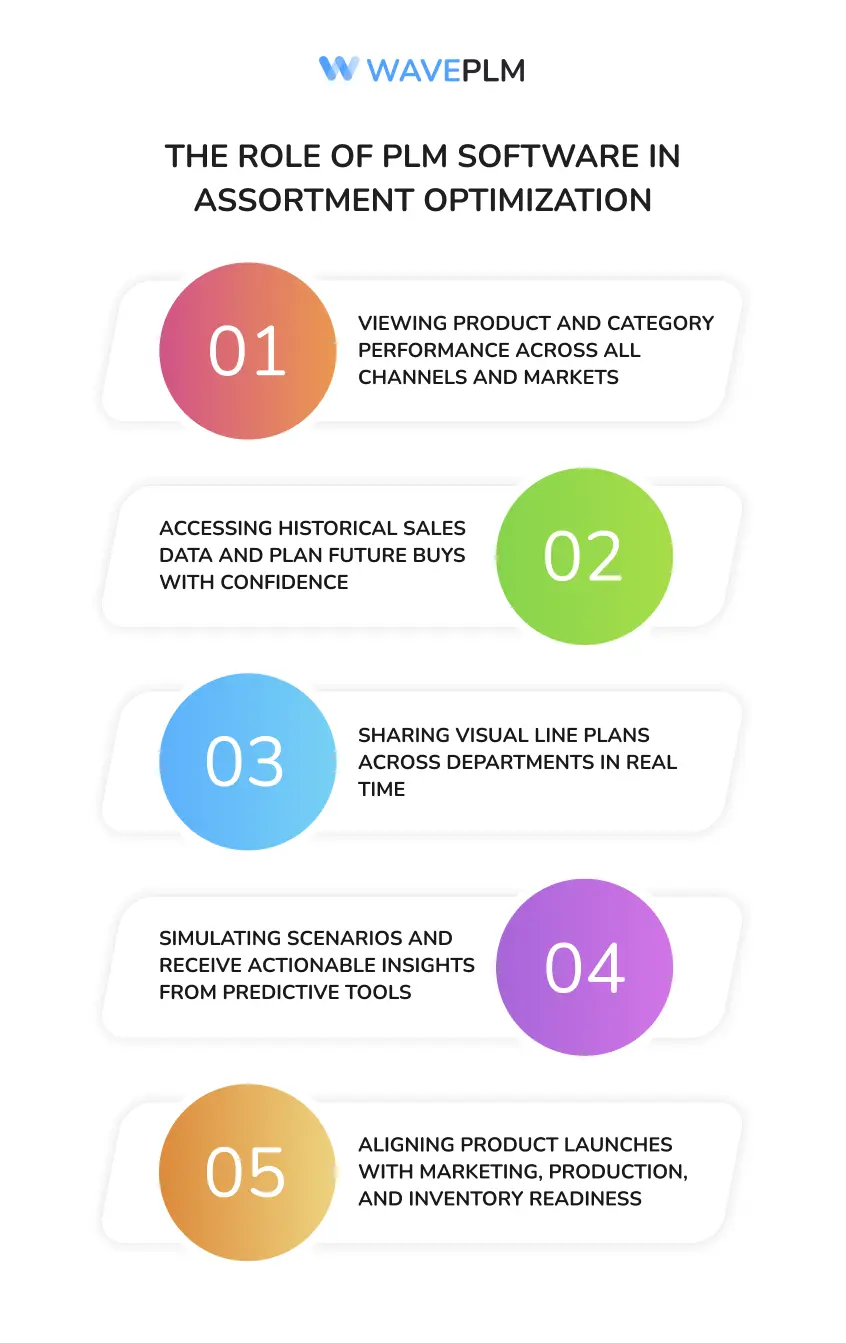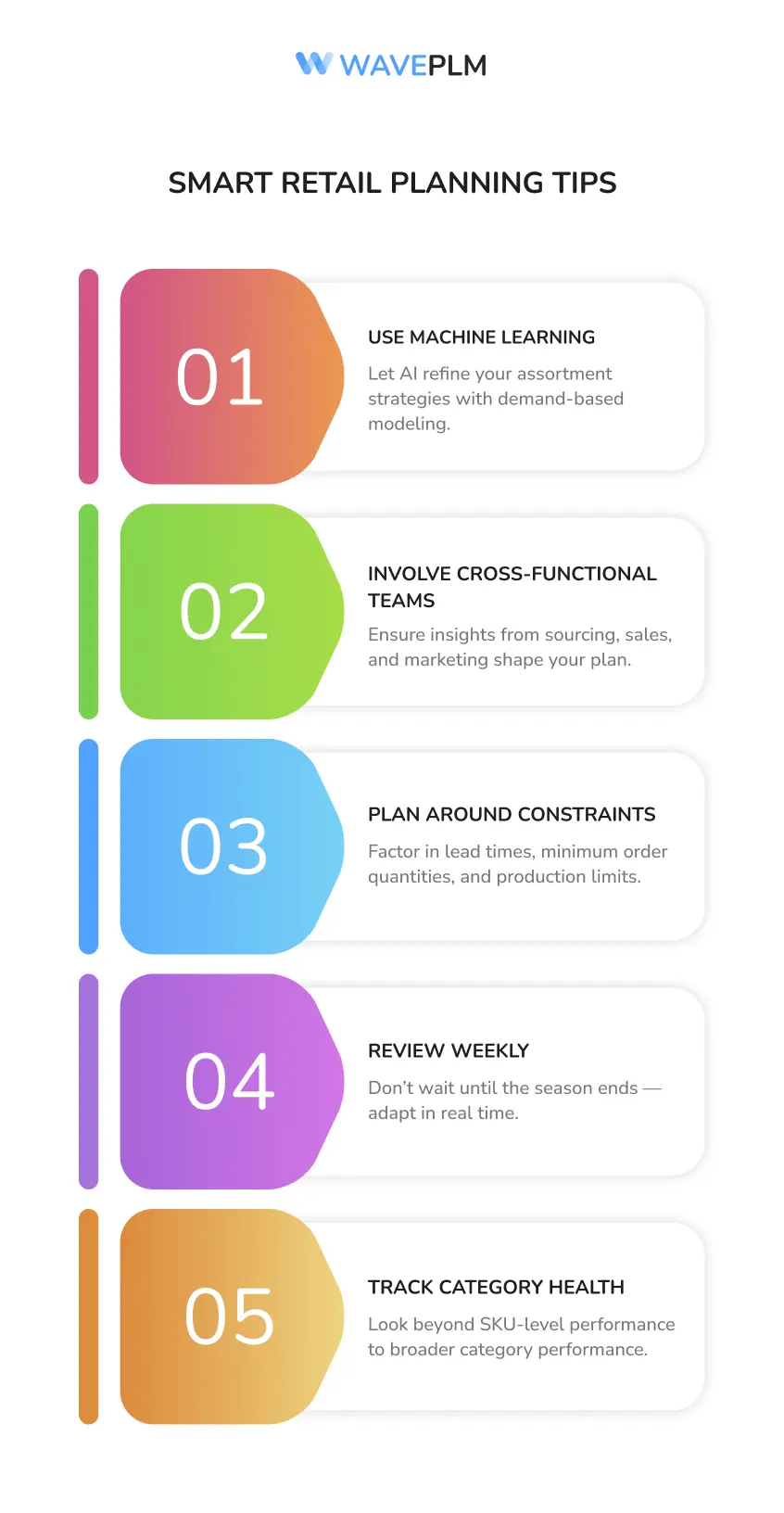
Introduction to Assortment Optimization
In the world of modern retail, where every shelf, screen, and store layout counts, success hinges on delivering the right products to the right consumers at the right time. This is where assortment optimization becomes critical. It allows brands and retailers to align their product assortment with customer preferences, sales data, and market trends—not assumptions.
Retailers must account for multiple variables, such as consumer demand, regional constraints, emerging trends, and supply chain complexities. Effective assortment optimization uses data analytics and machine learning to turn this complexity into actionable strategy.
Instead of overstocking items that don’t sell or running out of bestsellers, assortment optimization focuses inventory on high-performing SKUs. It allows for smarter decisions on what to stock, where, and when.
Modern PLM software (Product Lifecycle Management) is key to enabling this. PLM connects teams across design, development, planning, sourcing, and merchandising in a centralized, real-time platform. It ensures that all stakeholders work from the same accurate information when developing assortment strategies.
With PLM, brands can shift from reactive, manual approaches to proactive, automated data-driven decisions. The result: faster workflows, better customer satisfaction, and higher profitability.
Benefits of Optimization
What Is Assortment Optimization?
Assortment optimization in retail refers to the strategic use of analytics, modeling, and planning tools to identify the most effective mix of products for any given store, channel, or region. It integrates category management, historical data, and sales performance insights to create localized, high-impact assortments.
It considers product categories, space constraints, customer behavior, and sales trends to guide every decision—from introducing new products to phasing out underperforming items.
Benefits of Assortment Optimization
|
Benefit |
Description |
|---|---|
|
Maximizing Profitability |
Optimize shelf space for top performers and reduce markdowns |
|
Data-Driven Decision Making |
Use real-time sales data and machine learning models to improve accuracy |
|
Improved Customer Loyalty |
Offer relevant assortments that resonate with local customer segments |
|
Inventory Efficiency |
Minimize waste and overstock with smarter planning and forecasting |
|
Regional Flexibility |
Tailor product offerings to meet customer needs in different regions |
|
Enhanced Category Performance |
Continuously monitor and improve how categories perform by location |
|
Agile Response to Market Trends |
Adjust assortments quickly based on demand shifts and trend changes |
Understanding the Planning Process
Traditional assortment planning focused on fixed seasons and large buy cycles. Today’s retail environment requires agility. Consumers expect frequent updates, localized relevance, and seamless omnichannel experiences.
To respond, brands must adopt an integrated planning process that combines:
- Historical data analysis to identify high- and low-performing SKUs
- Machine learning to forecast demand for products, categories, and regions
- Scenario planning to test the outcomes of different assortment decisions
- Cross-functional collaboration using real-time platforms like PLM
- Centralized data to reduce friction between design, buying, and logistics
This process enables more accurate forecasting, tighter coordination, and proactive corrections to inventory and pricing.
The Role of PLM Software in Assortment Optimization
PLM software streamlines assortment planning by giving stakeholders a single source of truth for product information. It integrates with inventory, POS, and data analytics systems to provide a full picture of the category, from design to delivery.
With PLM, brands can:
- View product and category performance across all channels and markets
- Access historical sales data and plan future buys with confidence
- Share visual line plans across departments in real time
- Simulate scenarios and receive actionable insights from predictive tools
- Align product launches with marketing, production, and inventory readiness

Key PLM Capabilities for Assortment Optimization
|
Feature |
Business Impact |
|
Visual Line Planning |
Create and adjust assortments interactively for better decision making |
|
Centralized Product Data |
Eliminate duplication and errors in product assortment info |
|
Real-Time Collaboration |
Break silos between planning, design, and supply chain teams |
|
Demand Forecasting Integration |
Use predictive models to shape and optimize assortments |
|
Planning Templates & Checklists |
Standardize the planning process to ensure consistency and quality |
Managing Shelf Space
Shelf space is a valuable asset. In-store or online, the number of visible and promoted products is limited. Assortment optimization ensures every item placed is purposeful and contributes to sales growth.
Assortment Planning vs. Assortment Optimization
|
Term |
Purpose |
|
Assortment Planning |
Define which products to carry based on strategy and forecast |
|
Assortment Optimization |
Refine the plan based on real-time feedback, performance, and constraints |
Optimization doesn’t end once products are selected. It involves continuously reviewing sales performance, category assortment, and inventory levels to ensure alignment with strategy.
Real-World Example: Optimizing for Regional Performance
A leading global fashion retailer applied machine learning to PLM data to localize assortments:
- Urban stores in Asia emphasized minimalist and breathable styles
- European stores leaned into timeless fits and seasonal neutrals
- North American outlets prioritized comfort-focused and trend-driven pieces
This approach led to:
- 18% improvement in sell-through rates
- 22% increase in customer loyalty scores
- 30% reduction in end-of-season markdowns
Using assortment optimization tools, they created more targeted product assortment strategies that supported regional preferences and boosted margins.
Key Metrics to Measure Assortment Optimization
Success comes from tracking what matters. These KPIs offer a comprehensive overview of performance:
|
Metric |
What It Reveals |
|
Sell-Through Rate |
Demand alignment and pricing accuracy |
|
GMROI |
How much return each inventory dollar generates |
|
SKU Productivity |
Effectiveness of individual products in a category |
|
Category Contribution |
Role of each category in overall revenue and margin |
|
Inventory Turnover |
Efficiency of stock usage over time |
|
Return Rate |
Customer satisfaction and fit for the mix of products |
|
Fill Rate |
Ability to meet customer demand without stockouts |
Retail Assortment Optimization Checklist
Use this checklist to guide the planning and execution of your next product cycle:
- Analyze historical sales data across categories and regions
- Identify top-performing and low-performing products by store type
- Map category goals to business objectives (e.g., revenue, margin, growth)
- Segment customers by geography, demographic, and shopping behavior
- Use predictive models to forecast demand and seasonality
- Align assortment decisions with available shelf space and stock limits
- Validate assortments using visual line planning in PLM software
- Cross-check inventory constraints and supplier lead times
- Test assortments in pilot stores or markets
- Monitor real-time performance and adjust based on sales insights
- Collaborate across buying, planning, and supply chain teams
Smart Retail Planning Tips
- Use Machine Learning: Let AI refine your assortment strategies with demand-based modeling.
- Involve Cross-Functional Teams: Ensure insights from sourcing, sales, and marketing shape your plan.
- Plan Around Constraints: Factor in lead times, minimum order quantities, and production limits.
- Review Weekly: Don’t wait until the season ends — adapt in real time.
- Track Category Health: Look beyond SKU-level performance to broader category performance.

Conclusion: Data-Driven Growth Through Assortment Optimization
The future of retail lies in data-driven, flexible, and personalized assortment strategies. Customers expect curated experiences that reflect their tastes, lifestyles, and locations. Retailers must move fast, iterate continuously, and make informed decisions grounded in accurate data.
By combining assortment planning with real-time optimization and PLM software, brands can increase profitability, reduce waste, and boost customer satisfaction. Technologies like machine learning, data analytics, and digital twins are transforming how we build, test, and deploy assortments.
In today’s complex retail landscape, the brands that will thrive are those that integrate smart tools, respond quickly to market trends, and deliver the right products to the right customer — every time.
Explore more at blog.waveplm.com
Want to transform your retail planning process? Book a free demo of Wave PLM and discover how to optimize assortments with precision, speed, and impact.





Leave a Reply